Virunga National Park is a place of unparalleled wild beauty. It is also the only place on earth where you can trek with chimps in the morning, have lunch with gorillas and stand on top of the world’s most active volcano in the evening.
From towering snow-capped mountains overlooking never-ending savannah plains to dense jungles traversing up to boiling lava lakes, Virunga will exceed all of your expectations about what an off-the-beaten-track adventure truly is.
In addition to being a safe haven for 218 mammal, 706 bird, 78 amphibians and 109 reptile species, Virunga National Park also offers critical protection for the world’s last endangered mountain gorillas. A unique special who have made the forests of the Virunga Massif home for millions of years.
Nicknamed the “Lungs of Africa”, Virunga National Park is as critical to Africa as the Amazon is to South America, and it is no wonder that it has been listed as a UNESCO World Heritage Site since 1979.
So, if bubbling lava lakes and walking amongst endangered mountain gorillas, with hands bigger than your head, sounds like your type of adventure, let me tell you everything you need to know to visit Virunga.
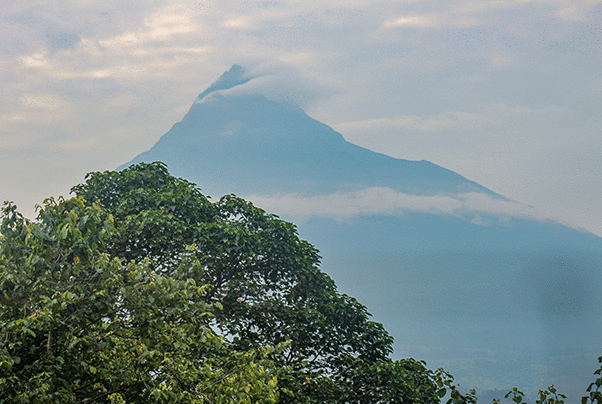
One of Virunga's many volcanos
Getting to Virunga
Located within the Democratic Republic of the Congo, Virunga National Park is nestled within the heart of the incredibly biodiverse Albertine Rift Valley. While there are several ways to get to Virunga, we highly recommend flying into Kigali International Airport.
It is roughly a three-hour taxi ride from the airport to the ‘Grande Barrièr’ border crossing (typically a USD$100 fare one way). Conveniently this is also where the Virunga National Park tourism office is located.
The office will check you in and give you everything you need to make sure you are set for your upcoming adventure. This is also where you will meet your guide who will transport you to your exclusive luxury camp/lodge inside the Virunga National Park.
Where to stay at Virunga National Park?
There are limited accommodation options within the park and to travel from Goma each day is not practical because it is unsafe to travel after late afternoon. Your best option is to stay at one of the national park's tented camps or lodges. Here are our favourites.
Mikeno Lodge (Luxury option)
Hidden amongst the Mahura Forest, Mikeno Lodge is every adventurer’s dream destination. Known for its sensational views overlooking the Albertine Rift, the lodge has 12 luxurious bungalows equipped with soaking tubs, natural stone showers, fireplaces and best of all flush toilets.
If that wasn’t enough, the lodge also has a fantastic restaurant and bar service where you can enjoy a romantic 3 – 5 course meal. Entertainment is provided at the lodge and there is a large lounge area around the fire to swap stories with fellow travellers. In the morning, you can enjoy locally sourced coffee or tea on your bungalow’s very own private terrace.
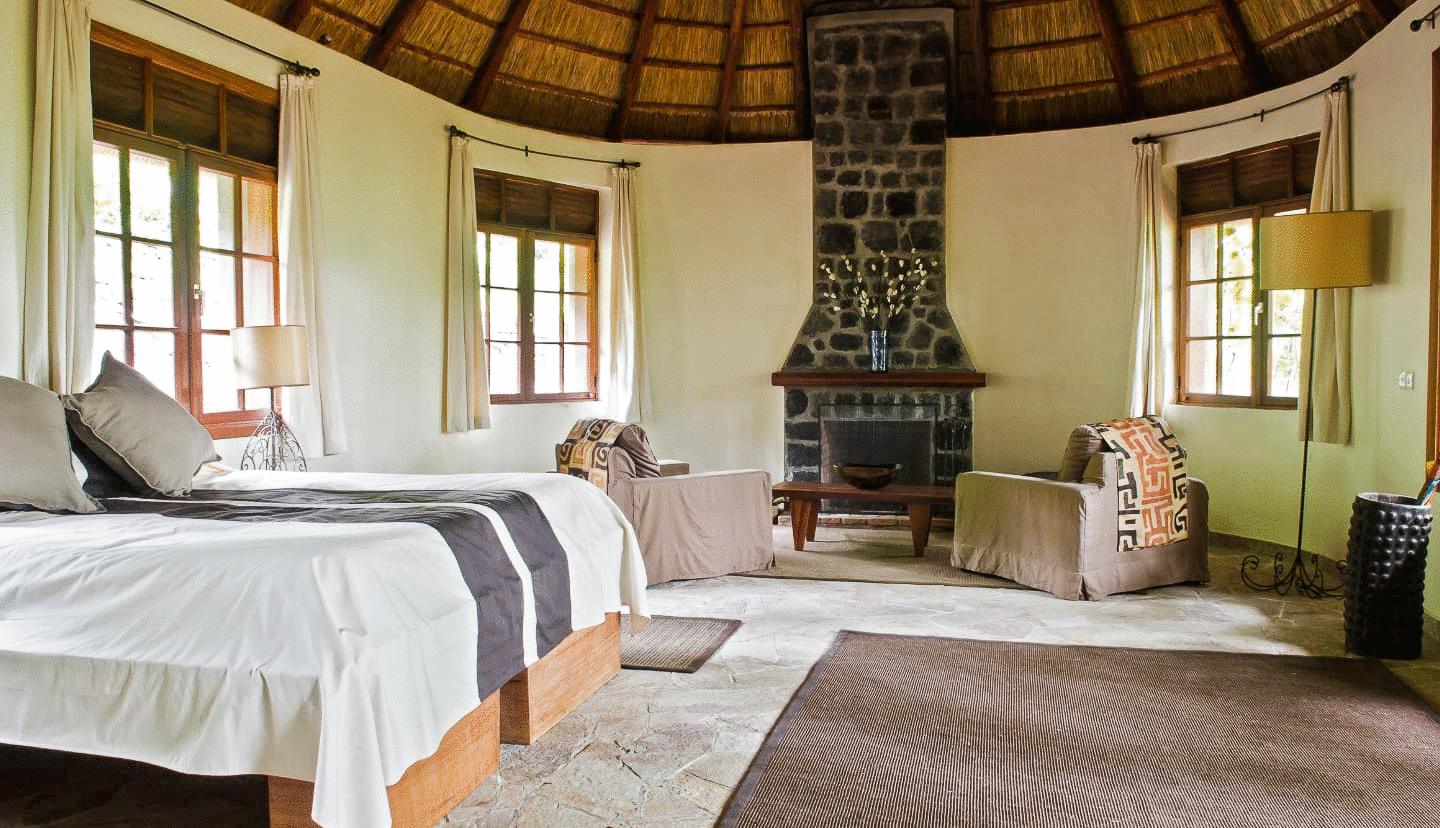
Note: Mikeno is the only accommodation option to trek with chimps.
What to do at Virunga National Park?
Gorilla trekking
The Park’s volcanic forests are currently home to one-third of the world’s population of endangered mountain gorilla’s and a trek to see them is an absolute must. Virunga’s mountain gorillas are currently protected by a dedicated team of National Park rangers who devote their lives to ensuring Virunga’s ten gorilla families (called troops) survive and thrive.
Depending on where the gorillas you’re trekking to see are located, we usually estimate that the trek requires 1 – 2.5 hours of hiking each way. When allocating which gorilla troop you visit, priority is given to the older, less fit trekkers to ensure they can reach the gorillas in time.
The hike throughout the volcanic jungles is phenomenal and teaming with wildlife. If you’re lucky, you might even get to glimpse any of the other 22 different primate species that live in the Park.
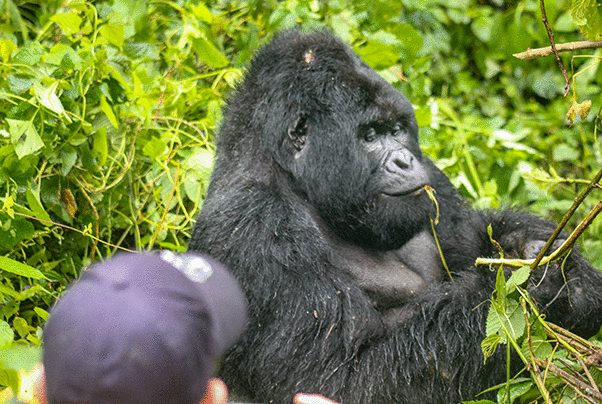
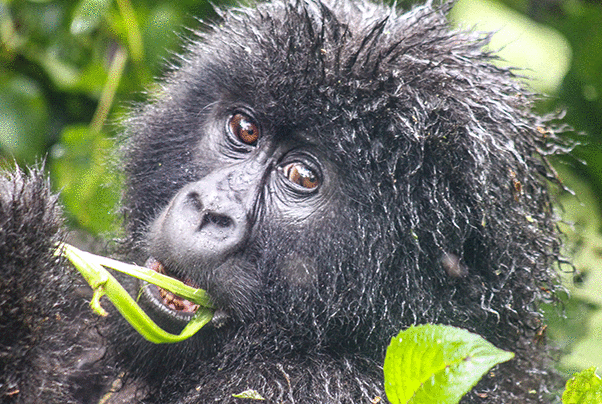
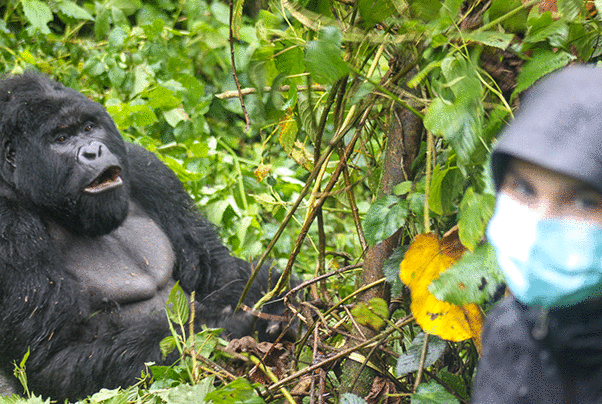
Once your guide & scouts locate your gorilla troop, you can spend one hour watching them eat, play or sleep. This is a once in a lifetime experience! Coming face-to-face with the largest primate in the world is something we guarantee you’ll never forget. Be prepared to be utterly entranced by the shear strength and magnificence of these animals.
Observing a troop of gorillas in their natural environment is a true gift, and I doubt you will be able to tear your eyes away as you witness the love and affection shared between them. At the very least this activity is sure to give you a little bit of an adrenaline rush, particularly if you come face-to-face with a silverback.
After your time with the gorillas, your guide will lead you back through the jungle to your accommodation for a late lunch. The rest of the day is yours to enjoy, maybe try your hand at a bird watching safari, explore one of the nature walks Virunga has to offer, or simply relax in a hammock with a book.
For the adventurers who fall in love with the mountain gorillas, which, let’s face it, is everyone, Virunga National Park has the only facility in the world for orphaned mountain gorillas, located at the Senkwekwe Center near Mikeno Lodge. Full disclosure…a visit to the orphan gorillas will make it almost impossible for you to leave when it’s time to go. We also highly recommend you watch the Netflix blockbuster “Virunga” before you visit.
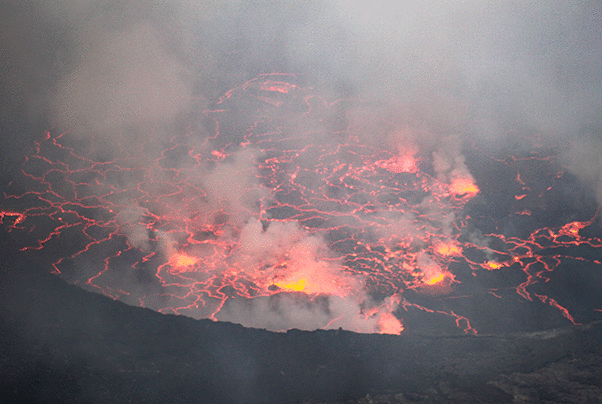
Nyiragongo Volcano
A visit to Virunga National Park would not be complete without taking on the giant Nyiragongo Volcano. Nyiragongo is the world’s largest lava lake and it sits in a towering caldera 3,470m above sea level. Nyiragongo is one of the best treks you will ever do in your entire life!
Your trek will commence at Kibati Ranger Post situated at an altitude of 1,870m. This section of the trek is characterised by dense jungle where you’re bound to encounter many of the weird and wonderful animals of Virunga. This often includes chimpanzees, monkeys, reptiles and of course more bird species than you can count.
The ascent up Nyiragongo can take between 4 – 6 hours, but don’t worry you’ll have plenty of breaks before you reach the summit. Similar to how we organise our trek up Mt Kilimanjaro, the slowest team members will set the group’s pace, and if you want to make sure you don’t suffer from altitude sickness, we highly recommend being last to the top.
Trust me when I say that this is one trek you need to tick off your bucket list. Sitting on the caldera rim, looking down at the world’s largest active lava lake churning around will have you mesmerised. It is kind of like when you go camping and sit around staring into the fire for hours, except with a giant lava lake being the fire!
The ascent up Nyiragongo can take between 4 – 6 hours, but don’t worry you’ll have plenty of breaks before you reach the summit. Similar to how we organise our trek up Mt Kilimanjaro, the slowest team members will set the group’s pace, and if you want to make sure you don’t suffer from altitude sickness, we highly recommend being last to the top.
Trust me when I say that this is one trek you need to tick off your bucket list. Sitting on the caldera rim, looking down at the world’s largest active lava lake churning around will have you mesmerised. It is kind of like when you go camping and sit around staring into the fire for hours, except with a giant lava lake being the fire!
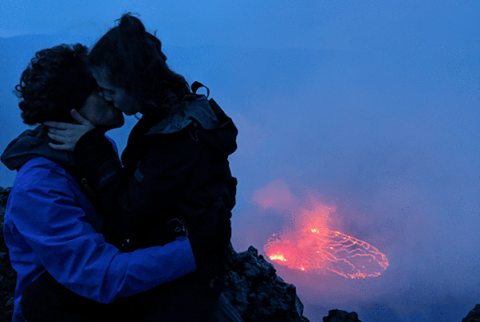
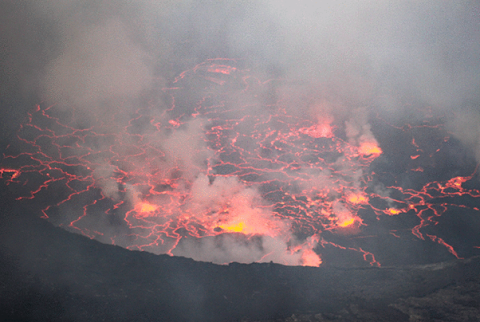
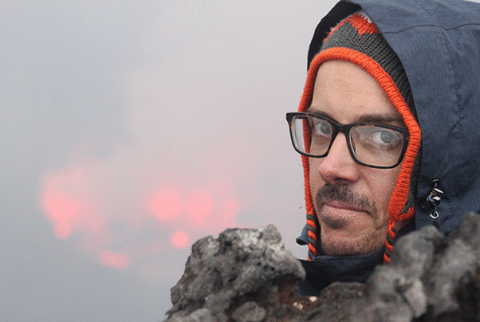
Chimp treks
If the mountain gorillas and Nyiragongo leave you craving more, why not spend a night at Mikeno Lodge so you can trek with our closest relative, chimpanzees? These playful little primates are one of the most incredible experiences in the world and we highly recommend.
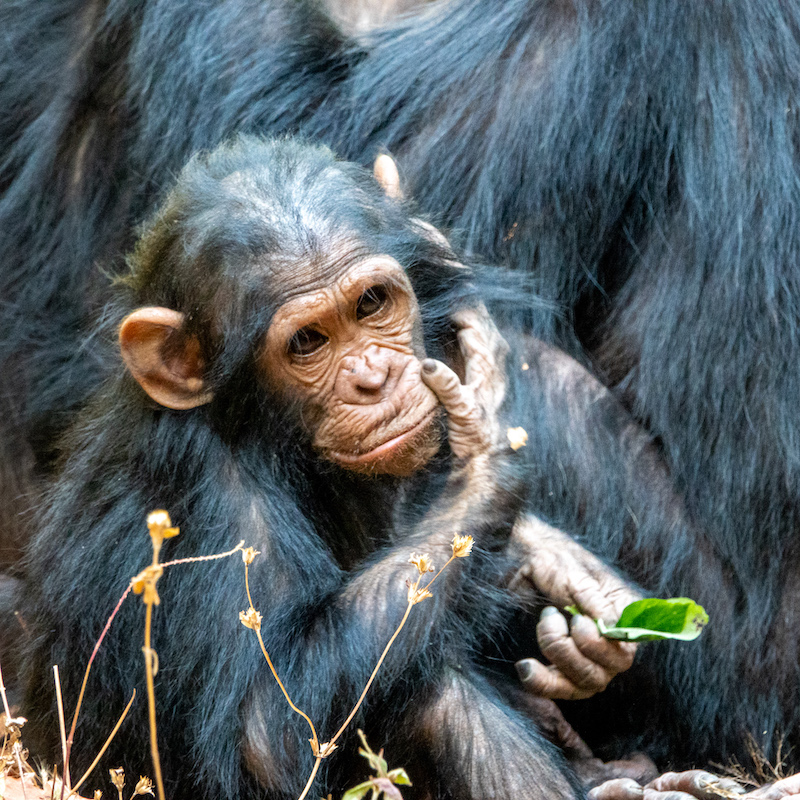
Safari
Alternatively, Virunga has an African Safari with your name on it. Stretching across the Park’s savanna lies the Ishasha Plains where you can find some of Africa’s most famous animals, including a very dense population of hippos, lions and of course the mighty elephant.
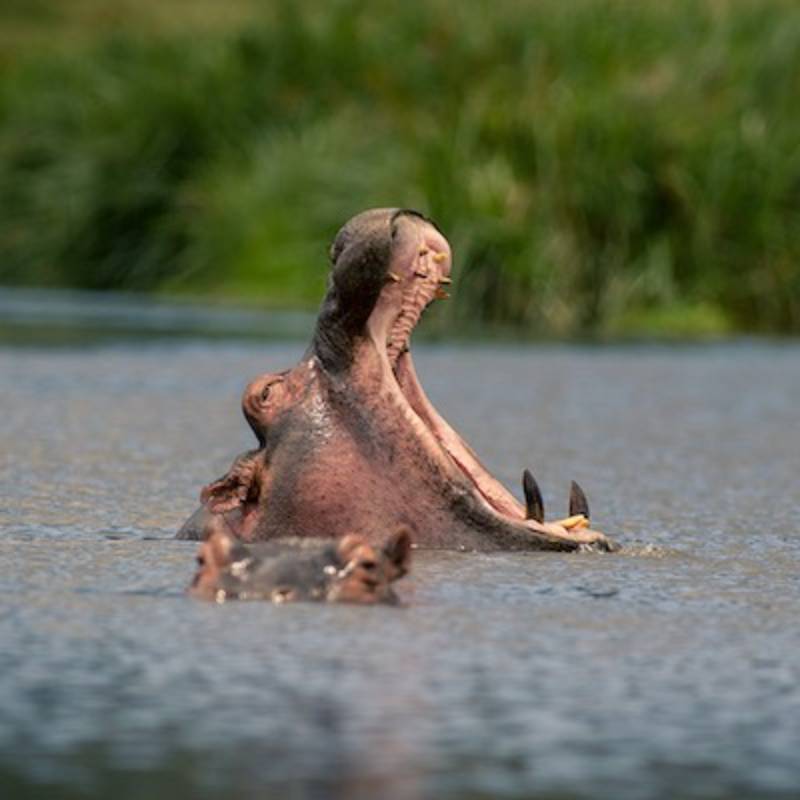
Cultural tours
Virunga also offers a range of village and cultural tours which can be arranged at your accommodation. These tours are a great way to immerse into the local culture, learn about Virunga and the DRC's history and meets some of the incredible people who call Virunga home.
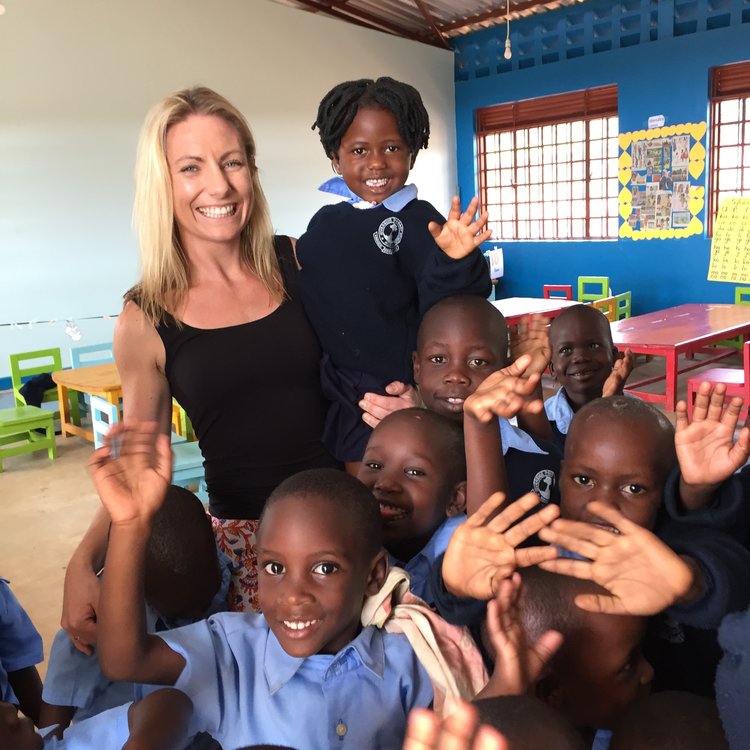
The history of Virunga National Park
Virunga became Africa’s first National Park in 1925, with the primary intention to protect the Park’s mountain gorillas.
Historically, due to Virunga National Park’s location, its ecosystem has been greatly affected by conflict and the effects of war throughout the Congo, dating as far back as when Belgium ruled in the early 1900’s. Sadly, these side effects have endangered the lives of Virunga’s mountain gorillas and many of the Park’s other animals in the past.
In recent years, the introduction of The Virunga Alliance is a big step in the right direction in ensuring that the conservation continues and that the four million people who live in the area can prosper. The alliance is driven by three key objectives:
- Conservation of the Virunga’s natural resources,
- Promotion of peace, and
- Poverty reduction.
Tourism will play a key role in seeing these goals accomplished by providing invaluable jobs, stimulating the local economy and funding much needed infrastructure projects.
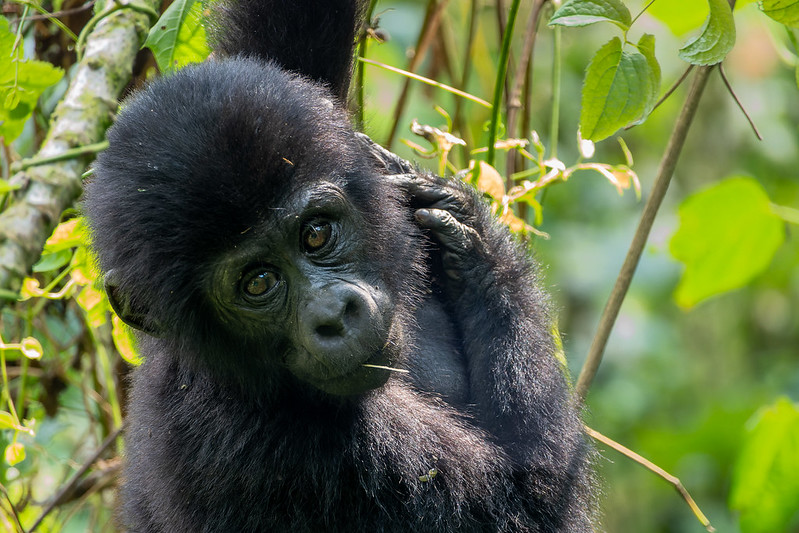
Why we love Virunga
Virunga National Park is simply breath-taking. From the moment you witness the ancient volcanoes, alive and bubbling with molten lava, to the moment you gaze into the eyes of a giant mountain gorilla, Virunga will leave you mesmerized.
This is a destination that can only be described as an off-the-beaten-track adventure. Knowing that your adventures here will aid the conservation of an ecosystem that is so vital and unique is an incredible feeling.
So if you’re looking for an unparalleled African adventure experience, add Virunga to your bucket list today.